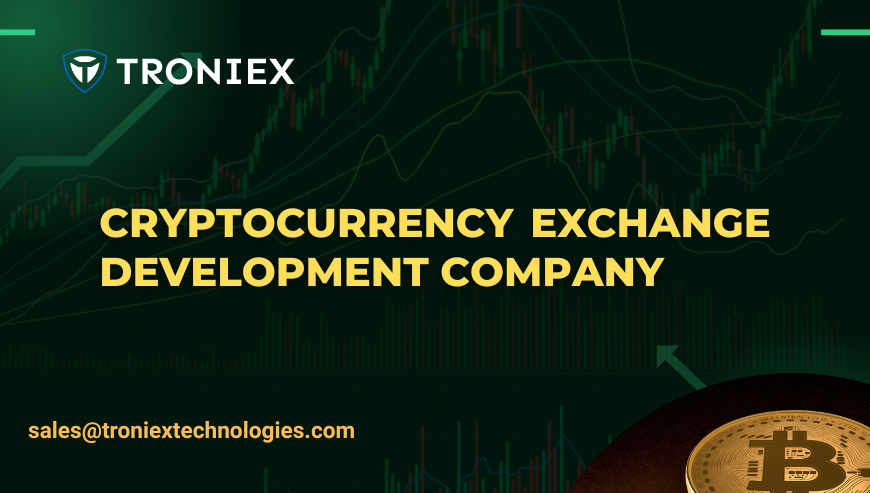As the global crypto ecosystem continues to evolve, modern cryptocurrency exchanges must accommodate a wide range of digital assets to meet user demand and remain competitive. Multi-currency support has emerged as a critical feature in crypto exchange development, allowing traders to diversify portfolios, improve liquidity, and access emerging blockchain projects. Integrating multi-currency functionality requires strong architecture, security, interoperability, and operational efficiency. This article explores why multi-currency support matters and how developers can implement it successfully.
Why Multi-Currency Support Matters
Cryptocurrency adoption has grown far beyond Bitcoin and Ethereum. With thousands of tokens circulating across multiple blockchain networks, traders now expect access to altcoins, stablecoins, memecoins, and utility tokens. Exchanges offering wider asset options gain several advantages:
Greater user attraction and retention
Higher trading volume
Improved market competitiveness
Reduced dependency on single-asset traffic
Additionally, multi-currency ecosystems appeal to investors seeking arbitrage opportunities, decentralized platform tokens, or region-specific digital assets.
Key Considerations for Supporting Multiple Currencies
Implementing multi-currency support is not as simple as adding extra wallets. Each blockchain has unique protocols, consensus mechanisms, and transaction formats. To build a scalable platform, developers must consider:
1. Blockchain Compatibility
Currencies operate on different chains such as:
Bitcoin (UTXO model)
Ethereum (account-based model)
Solana (parallel transaction processing)
BNB Chain (EVM compatible)
Supporting multiple networks often requires custom node integrations or third-party APIs.
2. Token Standards
Exchanges need compatibility with token standards like:
ERC-20, ERC-721, ERC-1155 (Ethereum)
BEP-20 (BNB Chain)
SPL (Solana)
TRC-20 (Tron)
Adhering to each token specification ensures smooth deposit, withdrawal, and trading workflows.
Wallet Infrastructure for Multi-Currency Support
Robust wallet architecture is the backbone of multi-currency exchanges. Platforms typically integrate:
Hot Wallets
Used for real-time withdrawal processing.
Quick access, but higher attack risk
Cold Wallets
Offline storage for safeguarding large funds.
Excellent security, slower processing
Multi-Signature Protocols
Enhanced control requiring multiple private keys.
Wallet systems must track balances accurately, support hierarchical deterministic (HD) keys, and maintain separation across blockchain networks.
Liquidity Management Across Assets
High-liquidity environments require:
Shared order books
Market maker partnerships
Third-party liquidity APIs
Some assets suffer from low liquidity, resulting in slippage and execution delays. Efficient liquidity strategies ensure smoother order matching, especially for lesser-known tokens.
Security Models for Multi-Currency Environments
With more assets, attack surfaces expand. Crypto exchanges must implement:
Anti-DDoS protection
Hot wallet withdrawal limits
Transaction monitoring
Smart contract audits (for DeFi tokens)
Developers must also apply strict access control to prevent internal breaches.
Real-Time Price Feed Integration
Traders rely on accurate pricing sourced from:
Aggregators
Oracles
Liquidity providers
Inconsistent feed data can lead to arbitrage manipulation or loss. Reliable oracles like Chainlink help validate price accuracy.
Regulatory Considerations
Certain tokens may fall under regional securities or commodities laws. Exchanges must navigate:
FATF guidelines
Licensing requirements
Tax compliance
KYC/AML procedures
Automated transaction screening systems help prevent illegal transfers.
User Experience Enhancements
From a trader’s perspective, multi-currency support improves platform usability through:
Built-in conversion tools
Cross-chain swaps
Multi-asset dashboards
Portfolio analytics
Intuitive UI/UX design reduces complexity for new crypto users.
Scalability and Performance
Exchanges must handle:
High transactional loads
Parallel blockchain operations
Large-scale user activity
Microservices architecture and cloud deployments improve horizontal scalability when supporting multiple assets simultaneously.
Future Trends in Multi-Currency Integration
In 2025 and beyond, exchanges will increasingly adopt:
Cross-chain bridges
Layer-2 scaling networks
Decentralized liquidity aggregators
Tokenized real-world assets (RWAs)
Multi-currency support will extend beyond crypto into digital securities, stable-fiat tokens, loyalty credits, and more.
Conclusion
Multi-currency support is no longer an optional feature it is a core requirement for any competitive cryptocurrency exchange. By integrating wallet architecture, liquidity strategies, blockchain compatibility, strong security, and user-friendly design, platforms can deliver seamless trading experiences across multiple digital asset categories. As token ecosystems diversify, exchanges that embrace multi-currency functionality will position themselves for stronger growth, increased adoption, and long-term sustainability in the evolving digital asset marketplace.





Comments